Garnet: Properties, Uses and Virtues
Garnet: A Gem with a Rich History
Garnet, a precious stone of varied colors and rich history, has been appreciated for centuries for its unique appeal.
Known for its association with vitality and transformation, garnet has captured the hearts of gem enthusiasts and jewellery connoisseurs the world over.
Discover the geological origins, historical significance and mystical properties of this exquisite gemstone.
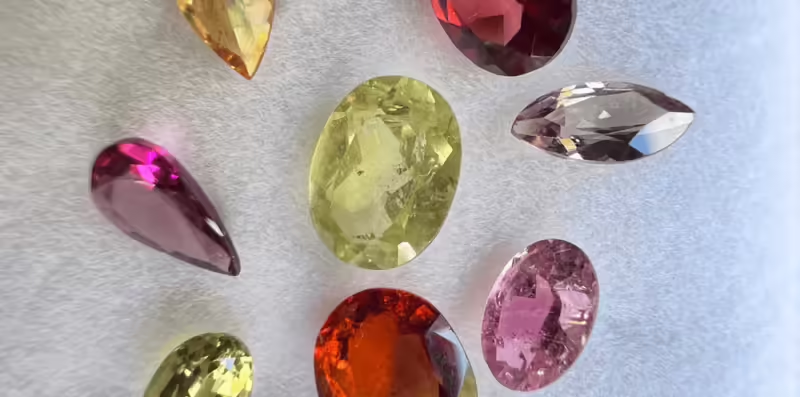
Garnet: Table of contents
- Geological Formation of Garnet
- Rough Garnet – Raw Beauty Revealed
- Sources – The Worldwide Reach of Garnet
- Historical Significance of the Garnet – Through the Ages
- Metaphysical Properties of Garnet – Illuminating energies
- Garnet Varieties
- Garnet Colors
- Durability and Wearabiility of Garnet
- Garnet Enhancements – Preserving Natural Beauty
- Synthetic Garnet – Nature in the Laboratory
- Imitations of Garnet – Discerning the Genuine
- Garnet Care – Preserving natural beauty
Geological Formation of Garnet
Garnet, a group of minerals comprising different species, forms in a variety of geological conditions. It is found in metamorphic, igneous and sedimentary rocks.
The complex interaction of pressure and temperature during its formation results in the precious stone appreciated for its distinctive colors and properties.
Rough Garnet – Raw Beauty Revealed
The appeal of raw garnet crystals lies in their captivating visual appeal, illustrated by distinctive geometric shapes.
Rough garnet stones come in a variety of crystal structures, including icostetrahedral and rhombododecahedral forms, each reflecting the gem’s inherent beauty and crystalline arrangement.
Exceptionally, demantoid garnets are mainly found in the form of pebbles or rounded crystals.
Rhombododecahedral form :
The visually striking rhombododecahedral shape is the hallmark of raw garnet crystals. Composed of twelve congruent rhombic faces, this symmetrical, well-defined polyhedron captivates gemologists and gem enthusiasts alike.
Recognising this shape is a crucial identification criterion for garnet, providing valuable information about its unique crystalline arrangement and inherent properties.
Icotetrahedral shape :
Another visually intriguing feature found in raw garnet crystals is the icotetrahedral shape. This polyhedron has twenty-four faces, each composed of equilateral triangles.
The icostetrahedral structure proudly displays the gem’s inherent symmetry and crystallographic characteristics, enabling gemologists to distinguish and celebrate garnet among its counterparts.
Sources – The Worldwide Reach of Garnet
Garnet is widely distributed across the globe and can be found in various regions, including India, Sri Lanka, Brazil, Madagascar and the United States.
Each source contributes unique variations in color and clarity, making garnet a diverse and sought-after gemstone in the world of jewellery.
Historical Significance of the Garnet – Through the Ages
Garnet is of significant historical importance and has been revered and cherished by different cultures throughout human history. Its popularity as a gemstone dates back thousands of years, and it has been used for a variety of purposes, from ornamentation to religious and medicinal practices.
Here are some key aspects of garnet’s historical importance:
Ancient civilisations :
The use of garnet as a precious stone dates back to ancient civilisations, including the Egyptians, Greeks and Romans. These ancient cultures valued garnet for its rich red color, a symbol of vitality, passion and courage. Garnet jewellery was often worn by royalty and high-ranking individuals as a symbol of power and protection.
Medieval period :
During the Middle Ages, garnet continued to be highly prized and was often used as a decorative element in religious artefacts, such as crosses and religious jewellery. It was also thought to have curative properties and was used in medieval medicine to treat a variety of ailments.
Renaissance Era:
The Renaissance saw a resurgence in garnet’s popularity as an ornamental gemstone. It was used in elaborate pieces of jewellery worn by the nobility and wealthy members of society. Garnet jewellery was also exchanged as gifts to symbolise love and affection.
Victorian era :
In the 19th century, garnet enjoyed another surge in popularity, particularly during the Victorian era. Queen Victoria’s love of jewellery and her attachment to colored gemstones contributed to the widespread use of garnet in jewellery designs of the period. Garnet jewellery has become a symbol of mourning and has often been incorporated into mourning jewellery to commemorate lost loved ones.
Today: garnet is known and accepted as the birthstone of January.
Metaphysical Properties of Garnet – Illuminating energies
Throughout history, garnet has been associated with various legends and symbolic meanings. It was believed to have protective properties and was worn as a talisman to ward off evil and negative energies. Garnet was also considered a stone of passion and romance, said to strengthen love and solidify relationships.
Garnet is considered a stone of transformation, vitality and courage. It is believed to boost energy levels, boost self-confidence and ignite a passion for life.
Garnet’s deep connection with the root chakra anchors the wearer in the present moment and helps them to manifest their desires.
Garnet Varieties
Garnet, a diverse family of gemstones, encompasses several species, each offering a unique set of varieties with distinct characteristics and colors. Let’s explore the captivating varieties within the garnet family:
Pyrope: Pyrope garnets are known for their seductive deep red hues, reminiscent of the embers of a blazing fire. This variety is often associated with passion, energy and love. Pyrope garnets come in a range of sizes and are popular choices for different types of jewellery.
Almandine: Almandine garnets have a rich red-brown to purple-red colour, evoking warmth and elegance. This variety is celebrated for its deep, saturated hues, making it a favorite choice for classic, timeless jewellery designs.
Spessartite: Spessartite garnets captivate with their bright orange to orange-red colors, reminiscent of the warm glow of a sunset. This variety exudes energy and creativity, making it a popular option for those looking for bold, striking gemstones.
Grossular: Grossular garnets come in a range of colors, including green, yellow, brown and even colorless. Within the grossular variety, several captivating sub-varieties stand out:
- Hessonite: With warm hues ranging from orange to reddish-brown, hessonite is a cherished variety for its earthy charm and appeal.
- Tsavorite: Tsavorite garnets have vivid green colors that evoke the lush beauty of nature. This variety is prized for its brilliance and rarity, making it a precious stone highly prized by connoisseurs.
Hydrogrossular: Hydrogrossular garnets come in a captivating range of colors, from green to pink and even black. This variety is appreciated for its uniqueness and versatility in jewellery designs.
Andradite :
Andradite garnets offer a rich palette of colors, including green, yellow and brown. Within the andradite variety, several exceptional sub-varieties stand out:
- Demantoid: Demantoid garnets are renowned for their astonishing green hues and remarkable brilliance. The flamboyant sparkle and intense color of this variety make it one of the most precious and sought-after garnets in the world of gemstones.
- Melanite: Melanite is a black variety of andradite garnet, captivating with its deep, dark charm. Its obsidian-like appearance makes it a unique and mysterious choice of gemstone.
- Topazolite: Topazolite garnets are renowned for their golden yellow to greenish yellow hues, reminiscent of the warm glow of the golden sun. The vibrant colors of this variety add a touch of radiance to jewellery designs.
Uvarovite :
Uvarovite garnets are distinguished by their emerald green hues, captivating with their intense, lush colors. This variety is rare and prized for its bright green appeal, often seen in small crystals and used as striking accents in jewellery.
Color-Changing Garnet :
Color-Changing Garnet can be a mixture of different species of garnet, but generally mixes pyrope, almandine and spessartite. This garnet does not show the same colours under natural or incandescent lighting.
Mixed garnets :
Resulting from a fusion between two or more garnet species.
- Rhodolite garnet: A blend of pyrope and almandine with a beautiful crimson hue, which inspires its popular name of “grape garnet”.
- Malaya garnet: Also spelt “Malaia”, this garnet is a mixture of spessartite and pyrope garnets. It has a warm orange to reddish-orange hue.
- Mali garnet: Also known as grandite garnet, this rare garnet is mainly composed of grossular garnets with varying degrees of andradite. The result is an earthy color ranging from yellow through green to brown-green.
Each variety within the garnet family has its own appeal and symbolism, making garnets a diverse and cherished gemstone choice for jewellery enthusiasts and collectors alike.
Garnet Colors
Captivating garnet fascinates with its kaleidoscope of colors, offering a delightful range of hues that have inspired admiration for centuries.
From the classic deep red of pyrope and almandine to the vibrant greens of demantoid, garnet colors are a diverse celebration of nature’s splendor.
All colors are technically available in garnet.
Durability and Wearabiility of Garnet
Garnet has excellent hardness, ranging from 6.5 to 7.5 on the Mohs scale, making it a durable gemstone suitable for many different types of jewellery. Its robustness ensures that garnet can withstand the rigors of everyday use, retaining its beauty for generations.
Garnet Enhancements – Preserving Natural Beauty
Garnet is generally appreciated in its natural state, and treatments are rare. Its captivating colours and properties require no enhancement to dazzle the viewer, making garnet a gemstone celebrated for its unadulterated beauty.
Synthetic Garnet – Nature in the Laboratory
While natural garnets have captivated gem enthusiasts for centuries, the modern era has seen the emergence of synthetic garnets.
Synthetic garnets, although available, are not as widespread as other synthetic gems on the market. These laboratory-grown equivalents have been developed using a variety of methods to mimic the structure and appearance of natural garnet.
Synthetic demantoid and uvarovite garnets have not yet been created, but some simulants exist.
Synthetic garnets have applications beyond jewellery and ornamentation. These laboratory-made gems have been developed for specific industrial applications because of their remarkable properties.
For example, certain synthetic garnets have become essential components in lasers, optical devices and scientific instruments. Their composition and consistent optical qualities make them invaluable in a variety of technical fields.
Imitations of Garnet – Discerning the Genuine
As a prized gemstone, garnet can occasionally be imitated or misrepresented by any colored gemstone, or glass, depending on the species or variety.
To find out more about a specific variety, please visit its page where more details will be provided.
Buyers should beware of imitations that attempt to reproduce the colors and captivating properties of the precious stone. Buying from reputable and certified gem dealers is essential to guarantee the authenticity of the gemstone.
Garnet Care – Preserving natural beauty
Taking care of garnet jewellery ensures that its timeless beauty endures. To preserve their brilliance, avoid exposing garnets to aggressive chemicals or sudden temperature changes.
Clean the stone gently with soapy water and a soft brush.
Keep garnet jewellery separate from other precious stones to avoid scratches and damage.
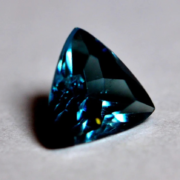
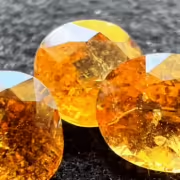
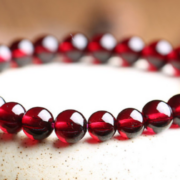
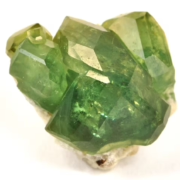
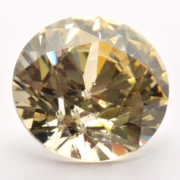
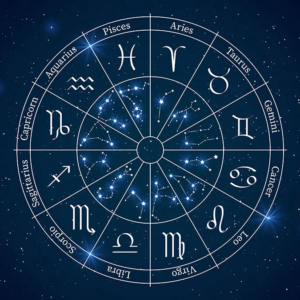
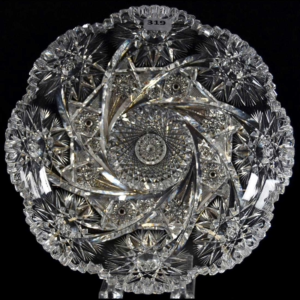
Leave a Reply
Want to join the discussion?Feel free to contribute!